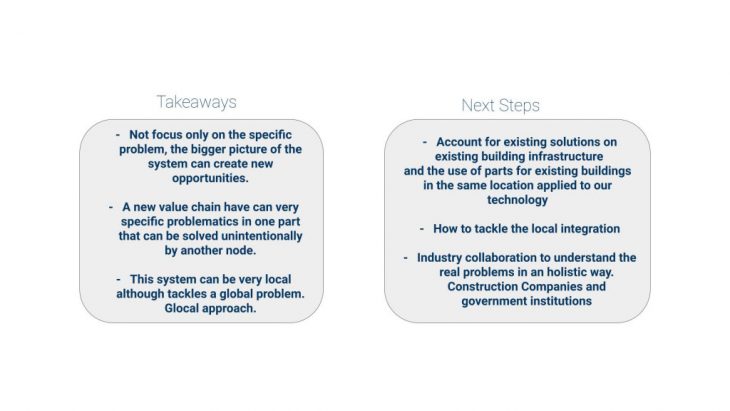Systemic thinking & the circular economy
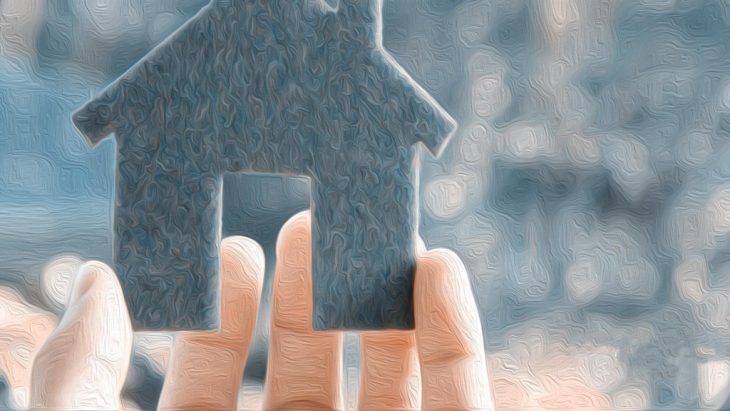
Topic chosen and the system we are impacting in the bigger picture. The topic of digitalization and automation of material recovery from pre-demolition sites will have a significant impact in the resource efficiency system.
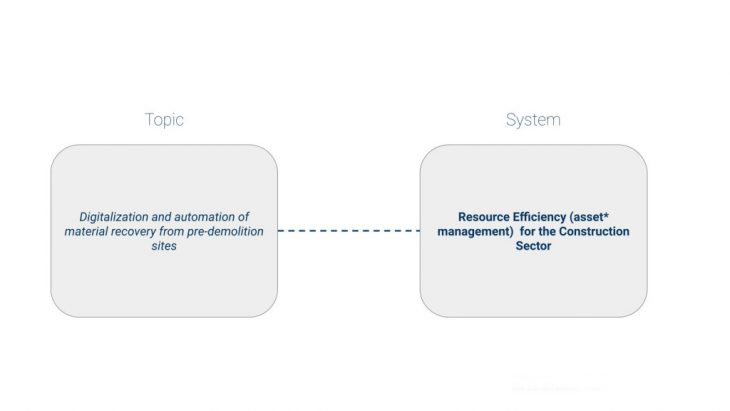
System Map
The system map is used to understand and position the research aim and topic. This map can also show unforeseen consequences involving several actors in a different area. In this case re-use and recycle materials on-site and off-site, should not be the most sustainable approach considering a building must have the most extended lifespan throughout its components in the same location/purpose. This digitalization will always bring job transformation in the sector and some will not be able to adapt.
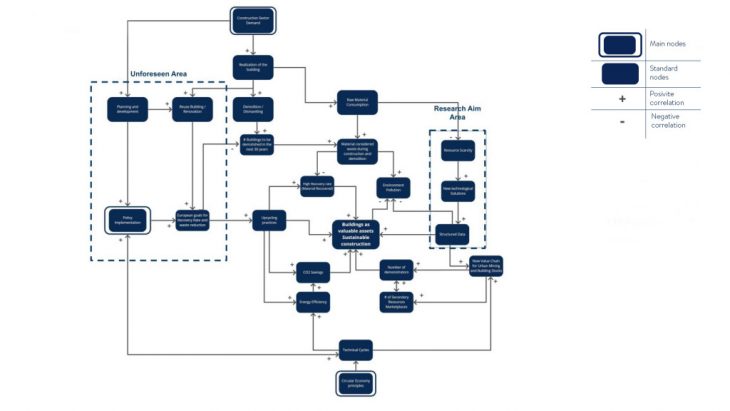
Iceberg Model (Think broader)
Our research is working at the underlying structures level.
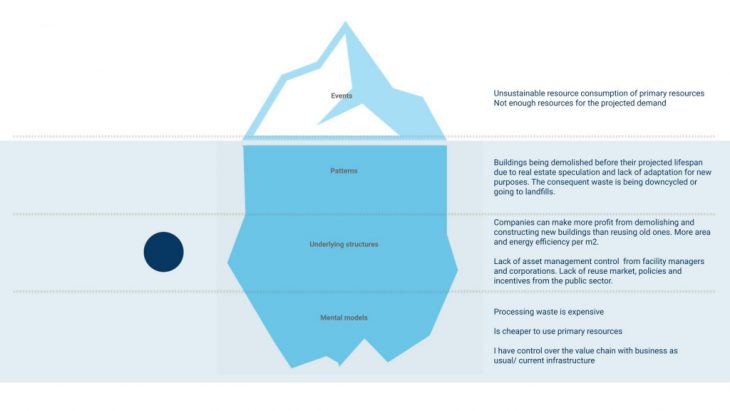
Stakeholder Assessment
General image of the stakeholder mapping.
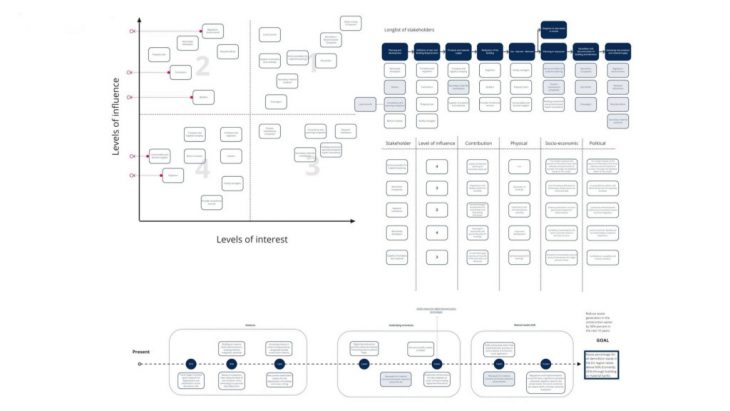
Long list of Stakeholders
The mapping of the different stakeholders are established in the workflow of the building scale, from planning and development all the way to assessing new products and material supply at the end of the chart. The darker rectangles are the relevant stakeholders for the research (planning and development, planning to repurpose, demolition and deconstruction of building and elements, lastly assessing new products and material supply).
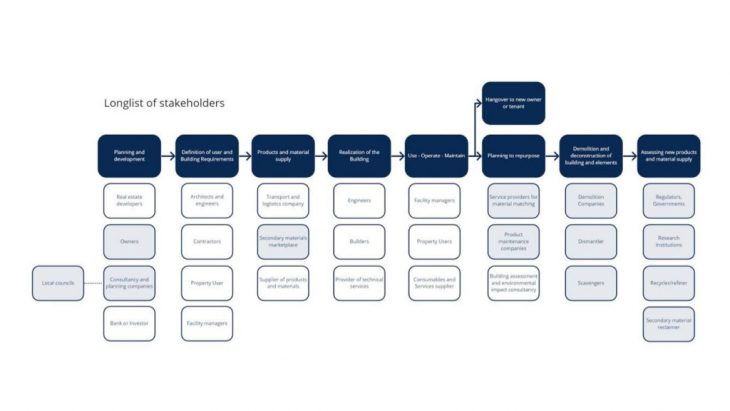
Stakeholders Mapping
Diagram showing the importance of stakeholders within the scope of the research based on the level of influence and the level of interest.
Most important (involved in the new value chain of circular economy): Urban mining companies, demolition / deconstruction companies, dismantlers, service providers for material matching, supplier of products and materials and secondary material reclaimer.
Stakeholders with a potential negative impact or against the project (they have in place a rigid infrastructure): regulators, governments, contractors, builders, consumables and services supplier, lastly engineers.
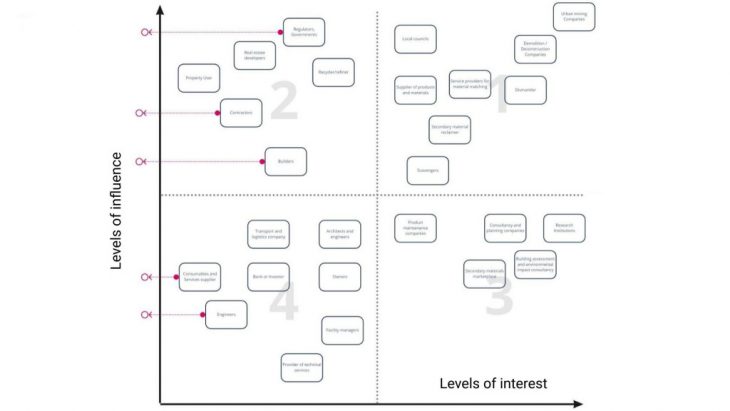
Hurdles and opportunities
Within the most influential stakeholders, certain common problems start to appear more frequently, for example, the feasibility of extending the life cycle of a building in economic terms vs business as usual, the lack of certifications, traceability and industry validation, the lack of incentives and benefits are currently based on long term projections and most importantly in terms of digitalization this model is based on the amount of information from other industries and participants to succeed; the larger the database the better.

Timeline
The goal “Reuse percentage for all demolition waste in the EU region raises above 50% (Currently 25%) through building as material banks” is established. The timeline is based on a 10 year projection and several stages are identified with the iceberg model. A mental model shift might need to happen in order to archive the goal.
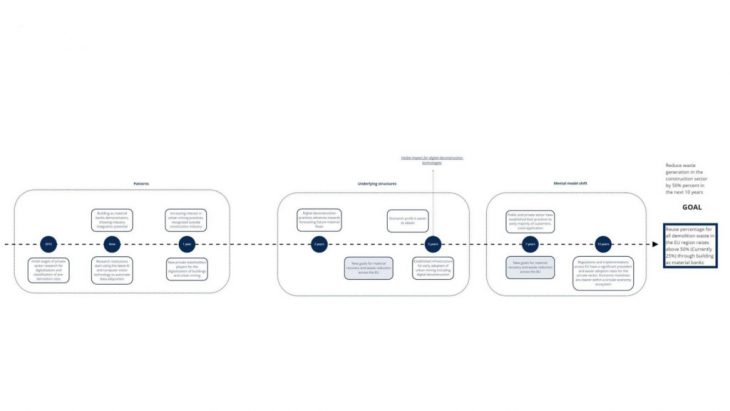
Conclusions
At the end of the exercise is simple to identify takeaways and next steps for the thesis.
